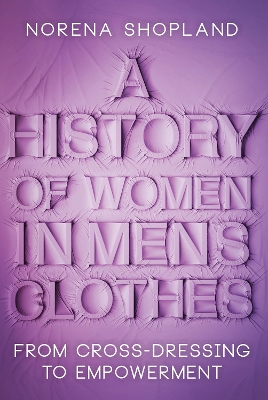Reviewed by annieb123 on
A History of Women in Men's Clothes is a monograph on the socioeconomic and historical implications of gender based clothing and the further implications for women crossing the "gender barrier". Due out 30th Aug 2021 from Pen & Sword, it's 216 pages and will be available in hardcover and ebook formats.
This is a meticulously researched and well written work which apparently came about from the author's research for a related project and covers a wide ranging and fascinating cross section of women who, through choice or necessity, used clothing and presentations traditionally reserved for men of the period. The introductory notes were fascinating and I recommend them highly. The author explains some of her methodology (with applicability to other queries and of undeniable usefulness to readers and researchers in other fields). Terminology/gender/pronouns are explained in the introduction as well and the author's choice of where and when to employ specific terms are explained clearly and logically.
The chapters are organised thematically and cover the reasons that women have chosen to dress and/or represent as men and include working conditions, protest, disinclination to conform to societal norms (and what the repercussions might've been). Although it's a layman accessible volume and the language throughout is understandable and engaging, it is rigorously annotated and the chapter notes and bibliography provide fertile material for readers to investigate further.
The book includes a number of photographs and facsimiles of drawings and news articles from the past with occasional background info or glimpses into a long vanished time. It would make a good selection for public or university library acquisition as well as support text for allied subjects such as gender studies. Fascinating stories from the past, well told.
Four stars.
Disclosure: I received an ARC at no cost from the author/publisher for review purposes.
Reading updates
- Started reading
- 1 July, 2021: Finished reading
- 1 July, 2021: Reviewed
